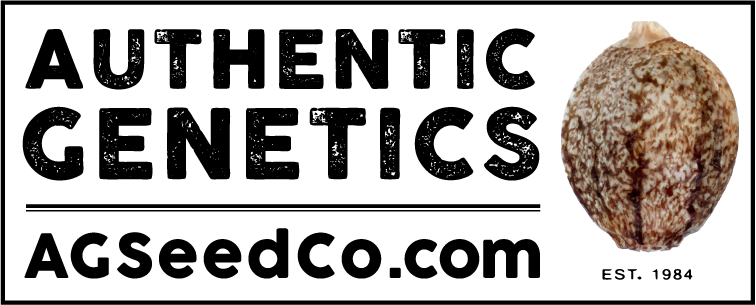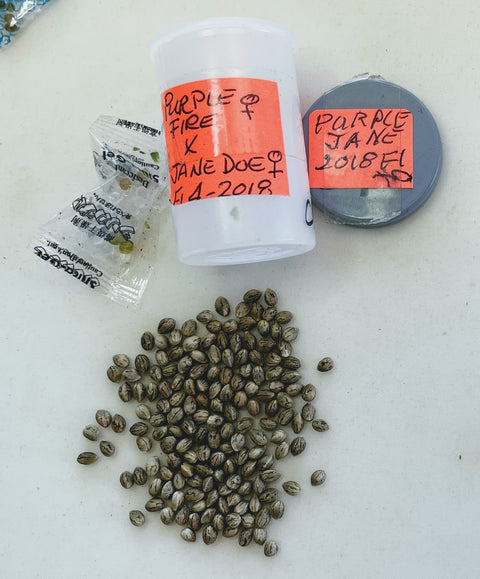When storing seeds, use the same principles as when storing pollen: separate seeds from all vegetative matter. Separating seeds from very dry buds with a kitchen metal mesh strainer makes this quick and easy.
Store seeds in small containers and include a desiccant; clean, dry seeds remain viable at refrigerator temperatures for easily 20 and more years. High temperatures, temperature swings, and high humidity are ruinous for seeds. For very long term storage, glass or metal containers are recommended by seed archivists, but I've used film canisters with great success.

Do not store in baggies as these may leak or break, particularly if taken in and out of storage. Most plastics actually “leak” after time, but film canisters are especially tough and impermeable and keep contents reliably dry. Storing seeds in plastic baggies is particularly bad.
Glass jars are impermeable, but leakage may come through their covers, and more desiccants must be used in larger containers. Divide seeds among many small containers as any one failure is not a total disaster.
Refrigeration is my preferred, long-term storage solution and I’ve had 100% germination with seeds stored more than 20 years.
I’ve had less experience with frozen seeds, but had almost 100% germination with seeds frozen for 15 years. However, some were weaker than refrigerated seeds—their embryonic leaves had gray areas, indicating dead or dying tissue, but with tender care, 90% grew into strong, normal plants (photo below).

The photo shows Skunk #1 seeds with tissue damage after being frozen for 14 years.
This may have had to do with a freezer failure during this time. That convinced me that refrigeration was better, as refrigerator failure would not be as deleterious to seeds going from cold to household temperatures than frozen to thawed. Seeds cannot be taken in and out of a frozen state without harm, but can, in my experience, be taken out of refrigeration for short periods as long as stored with desiccants.
–Mel Frank
Below is a wonderfully in depth article about seed preservation.
A GUIDE TO LONG-TERM SEED PRESERVATION

